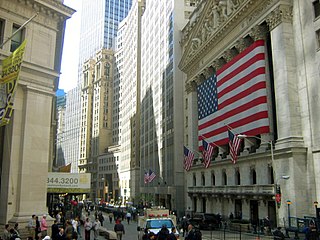The rise of Wall Street has also seen the rise of New York City, naming it the most powerful city economically and the leading financial centre in the world. Housing two of the largest stock exchanges, NASDAQ and New York Stock Exchange, in the world, let us look at how Wall Street became the economic powerhouse it has become today.
The name Wall Street has many conflicting stories as its origin. But the most widely accepted story is how a wall on the Northern boundary protected the New Amsterdam settlement against pirates and Native Americans.
In the early 19th century, both residences and businesses occupied the area. But there were increasing demands for the area to be strictly business dominated. After the Erie Canal was opened in the early 19th century, there was a massive boom in companies in New York City. This was the first primary reason for Wall Street becoming the money capital in America.

In the 1840s and 1850s, residents of Wall Street began moving to Midtown Manhattan because of the increase in businesses. The Civil War brought further prosperity for cities like New York; causing New York to become one of the nation’s banking centres. With many companies like JP Morgan and Standard Oil moving to New York, the city became a connection for Old World Capital and New York ambition.
The start of the 20th century came new challenges for Wall Street. But the headquarters of JP Morgan being set up in New York turned Wall Street into the center of finance in America. Encouraged by the fact that the government’s implementation of tax incentives, businesses in the city were given even more confidence than ever to do conduct business in Wall Street.
Corporate culture began gathering pace, and it was evident even in the cityscape of New York with large buildings and skyscrapers being constructed to facilitate business. The growth in New York was only rivalled by Chicago. There were residential areas next to Wall Street, the Bowling Green area which was described as a backyard to Wall Street because of the terrible housing conditions, high infant mortality rate and poor people.
The peak of the market was in 1929. But this also saw the market slipping which resulted in investors being worried about the safety of their money. On October 24, the market crashed which is now known as the great depression of 1929. This also saw the government trying to force in regulations to prevent future crashes and acquirement of equities based merely on credit.
